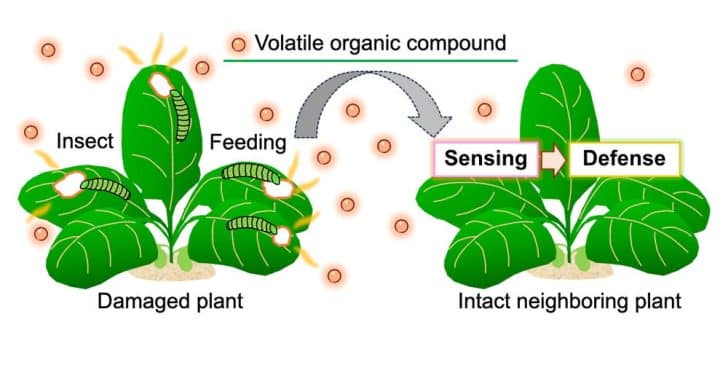The familiar sweet and earthy fragrance that envelops the air after a fresh cut of grass is not just a pleasant aftermath of landscaping; it’s a testament to a remarkable form of communication happening among plants. In a fascinating revelation, scientists have discovered that, much like animals, plants possess the ability to warn their nearby counterparts of potential dangers. However, unlike the auditory warnings used by animals, plants utilize a silent form of communication through chemicals, specifically volatile organic compounds.

This groundbreaking discovery was captured for the first time on camera by scientists, shedding light on the intricate world of plant communication. The research, led by Masatsugu Toyota, a molecular biologist from Saitama University, employed a specialized microscope that detects certain chemicals as light. The result? When healthy plants received warning messages from damaged plants, they emitted a visible response, akin to lighting up like a bulb.
Toyota expressed the significance of their imaging technique, emphasizing its power in revealing the sensitivity of plants. “This imaging technique is a very powerful tool to tell everybody and to let everybody know that plants are very sensitive,” he explained.

The chemicals responsible for this plant communication are volatile organic compounds, which function as the messengers between the flora. These compounds enter healthy plants through tiny pores known as stomata and traverse throughout the leaves, disseminating vital information within the plant. It’s a complex system, analogous to how our noses detect scents in the air, providing us with environmental information.
In essence, when your nose picks up a foul, sulfur-heavy odor, it may indicate the presence of an angry skunk nearby. In a similar fashion, plants release mists of particles into the air, warning their neighboring plants of potential threats or damage. This silent cry of warning has long been an invisible, intricate dance in the world of botany, only now being unveiled through the lens of scientific observation.

The findings of this study were documented in a paper published in the prestigious, peer-reviewed journal Nature Communications, adding a significant contribution to our understanding of plant behavior and communication. This revelation not only highlights the sophisticated ways in which plants interact with each other but also underscores the importance of recognizing and respecting the intricacies of the natural world.

